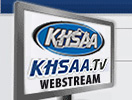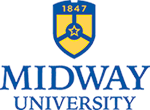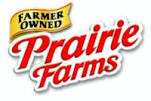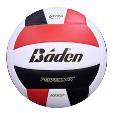04/22/15-Final Bylaw 23 Changes Necessary Due to Emergency Adoption of NFHS Task Force Recommendations
PrintBelow is the revised wording of Bylaw 23, Section 6 (Football), as a results of its emergency adoption due to the recommendations of the NFHS Trask Force:
Sec. 6) Sports Specific Limitations- Football
a) Organized practice shall be structured in football as follows:
(1) Football drill work and practice activity shall be defined in the following five categories:
Level 0-“Air”-Players run a drill unopposed without contact.
Level 1-“Bags” – Drill is run against a bag or another soft-contact surface.
Level 2-“Control” – Drill is run at assigned speed until the moment of contact; one player is pre-determined the ‘winner’ by the coach. Contact remains above the waist and players stay on their feet.
Level 3-“Thud” – Drill is run at assigned speed through the moment of contact; no pre-determined “winner.” Contact remains above the waist, players stay on their feet and a quick whistle ends the drill.
Level 4-“Live Action”-Drill is run in game-like conditions and is the only time that players are taken to the ground.
(2) Contact and non-contact shall be defined as follows:
“Contact” will be defined as drills run at the Level 3-Thud and Level 4-Live Action Level, and Drills run at the Level 0-Air, Level 1-Bags and Level 2-Control level shall be defined as “Non-Contact”
All drills in shells (shorts, shoulder pads and helmets) shall be “Non-Contact”.
In helmets- only, only Level 0-“Air” and Level 2-“Bags” drills may be conducted
(3) From the end of the season through the day prior to the first day of spring practice; and from the last day after spring practice through May 31, schools may not issue football equipment included in NFHS Rule 1-5 including helmets, with the exception of an all-star game or individual camp as detailed. During these periods, schools may not organize or participate in any football activities that allow players to be in football gear, even if contact does not occur.
(4) From June 1 through June 24, schools may not issue football equipment included in NFHS Rule 1-5 other than the helmet, with the exception of an all-star game or individual camp as detailed. During these periods, schools may not organize or participate in any football activities that allow players to be in football gear included in NFHS Rule 1-5 other than the helmet, even if contact does not occur. Activity during this period may not include contact (Level 3-”Thud” or Level 4-”Live Action”). The KHSAA catastrophic insurance provided by the Association is not in effect during this period. Heat index monitoring guideliness must be complied with during any activity.
(5) During the period beginning on the day immediately following the dead period (Bylaw 24) and through July 31, member schools may participate in non-contact interscholastic simulations (i.e. 7 on 7) and such participation does not count against scrimmage limitations provided that the first practice in full gear has not been conducted and drills using Level 3-Thud and Level 4-Live Action Level have not been conducted. The school issued helmet may be used during these activities, but no other equipment included in NFHS Rule 1-5 may be used. The KHSAA catastrophic insurance is in effect for these simulations if other schools are involved. Heat index monitoring guideliness must be complied with during any activity;
(6) Preseason and during season practice in football shall be as follows:
a. Heat index monitoring guideliness must be complied with during any activity;
b. Beginning July 10, the first legal organized practice wearing a helmet may be conducted. The first five (5) days of organized practice shall be in helmets only. Only Level 0-“Air” and Level 1-“Bags” drills can be conducted. The KHSAA catastrophic insurance is in place for these drills and practice sessions;
c. Beginning July 22, practice may be conducted in shells (shorts, helmets, shoulder pads) for each player who has had at least five days in helmets only. Only Level 0-“Air”, Level 1-“Bags” and Level 2-“Control” drills can be conducted. The KHSAA catastrophic insurance is in place for these drills and practice sessions;
d. Beginning August 1, practice may be conducted in full gear for all players who have had at least three practices wearing shells (helmets and shoulder pads). Level 0-“Air”, Level 1-“Bags”, Level 2-“Control”, Level 3-“Thud” and Level 4-“Live action” drills can be conducted however Level 3-“Thud” and Level 4-“Live action” drills can only be conducted in one practice per day;
e. Once full gear practice and drills using Level 3-Thud and Level 4-Live Action Level have begun, practice shall adhere to the following restrictions:
i. Cannot have multiple contact practices on any day where Level 3-“Thud” and Level 4-“Live action” drills are conducted;
ii. On days when two practices of any type are held, a total limit of 5 hours per day of practice, not including the mandatory break shall be allowed, with no single practice exceeding three (3) hours. Water breaks, rest breaks and injury treatment shall not count against the 5-hour limit. Weight training, conditioning, required meetings, required sport and skill specific film study, and teaching period/walk through simulations without equipment shall count against 5-hour limit;
iii. On days when only one practice of any type is held, a total limit of 3 hours per day of practice shall be allowed. Water breaks, rest breaks and injury treatment shall not count against the 3-hour limit. Weight training, conditioning, required meetings, required sport and skill specific film study, and teaching period/walk through simulations without equipment shall count against 3-hour limit;
iv. A 3-hour break is required after a contact practice where Level 3-“Thud” and Level 4-“Live action” drills are conducted during which no activity can be held and the athletes are located where cooling and recovery is possible. During this break, there can be no gear worn, and no activity that in any way simulates football or football drills. This restriction is in place regardless of where the practice occurs including camps, home practices, or other workout areas. This period is solely for rest/recovery;
v. Weight training, conditioning, meetings, film study, and teaching period/walk through simulations without equipment may not be conducted during the three-hour required break;
vi. Beginning on Monday of the week the first scrimmage is played by the school, each school may participate in “Thud” or “Live Action” drills and game time simulations (not including contests or legal scrimmages) for no more than ninety-minutes per team, per week;
vii. A non-contact simulation (7 on 7) or any other type of competition against another school in any form may not be held with the exception of the two (2) allowed scrimmages, and the allowable games;
viii. After the opening day of the school year, a school shall not conduct multiple on-field practice sessions on the same day; and
ix. All schools shall upon request, submit any required documentation to verify the proper execution of the practice regulations, including scrimmage, contact, and Heat/Humidity Measurement and Compliance Programs.
b) After August 1 and prior to the opening varsity game of the season, there shall be no more than two (2) scrimmages or practice games per member school (grades 9-12) with players other than members of the squad.
c) The first game shall not take place prior to the Friday eleven (11) weeks prior to the week of the first round of the football playoffs.
d) The season shall consist of a maximum of ten (10) regular season games and the opportunity to play regular season games shall conclude at the end NFHS corresponding week 17. Any school may play one of the allowable regular season games during Week 0 (normally NFHS corresponding week 7) provided that the total schedule does not exceed ten (10) regular season games and that the allowable number of scrimmages is reduced to one.
e) Provided that at least one classification within the KHSAA conducts playoffs that last five (5) weeks, any school that chooses to compete for a district title and is placed in a classification where only four (4) weeks are needed to complete the playoffs may play an additional regular season contest (total of 11 contests), the last of which can be played during the first round of the playoffs for the other classifications.
f) The opportunity to participate in regular season contests shall end at all levels of play (grades 9-12) on the Saturday preceding the first KHSAA Tournament (District, Region or State), with the exception that the varsity team may practice and play through its elimination from KHSAA sanctioned tournament play. Following elimination, there shall be no further practice or play during the remainder of the academic school year.
g) Each player, in order to be eligible to participate against another school and to become acclimatized and acclimated, shall have taken part in a minimum of five (5) practices over five (5) days in helmets only, three (3) practices in helmet and shoulder pads over three (3) days followed by three (3) contact practices over three days.
h) Each football school may elect to conduct spring football practice under the following conditions:
(1) A school may conduct ten (10) spring practice periods of not more than two (2) hours in length and not more than one practice per day over ten (10) days during three consecutive calendar weeks, which shall be chosen by the school on or before December 15;
(2) Failure to submit the schedule by December 15 will result in a loss of the ability to conduct spring football practice.
(3) The three consecutive calendar weeks shall not begin prior to the Monday following the school’s elimination from postseason play in basketball, and shall not conclude later than the last day of school on the original school calendar.
(4) Any period of time when school is not in session on a week day, including testing and breaks, shall not count as one of the ten (10) permitted days, and practice shall not be conducted on those days.
(5) All equipment authorized by the football playing rules may be used during this period.
(6) There shall be no interscholastic competition during this period, and all participants shall be eligible according to all KHSAA eligibility rules.
(7) Once dates are established by the school, the dates may not be changed except by request of the member school Principal, and only if the newly requested period begins not later than the Monday following the conclusions of the originally scheduled school spring break.
(8) Practice sessions shall conform to the following rotation of types of practice:
a. Two days Non-Contact (0-“Air”, 1-“Bags”, 2-“Control”)
b. Two days Contact (3-“Thud”, 4-“Live Action”)
c. One day Non-Contact (0-“Air”, 1-“Bags”, 2-“Control”)
d. Two days Contact (3-“Thud”, 4-“Live Action”)
e. One day Non-Contact (0-“Air”, 1-Bags, 2-“Control”)
f. Two days Contact (3-“Thud”, 4-“Live Action”)
(9) A student below grade nine or in grade 12 shall not participate;
(10) Only students currently eligible by all KHSAA rules including Bylaws 2 through 12 may participate;
(11) Intrasquad games may be held but shall be counted as one of the ten practice sessions; and
(12) Any student who has neither participated in organized competition in a KHSAA sanctioned winter or spring sport, nor has documentation of supervision by a coach qualified under Bylaw 25 in a minimum of 8 conditioning workouts after the previous season and before the start of spring practice (including competition on a competitive weight lifting team at the school), shall have two (2) days of practice in helmets only and two (2) additional days in shells (helmets and shoulder pads) for acclimation prior to wearing the remainder of the allowable football gear;
(13) There shall be no mandatory participation (including school or coach imposed penalty) by any person on a spring sports eligibility list (or entering any spring sport scrimmage or contest) or any other student desiring not to participate.
i) Following the season and until organized practice begins for the next season, no football gear other than the helmet may be issued used by a member of the team for any activity except for the approved spring football practice period and issuance of gear to a specific individual for attendance/participation in a specific event at an off campus facility. Football gear as defined in NFHS rule 1-5 (including shoulder pads and other protective gear) may be issued to a player who has previously played for the team to participate in an individual camp or all-star game between the last day of the previous season and before July 31 provided no more than four players from any school participate in the same sessions at that camp. The gear must be returned by the individual immediately following the camp. No football gear as defined in NFHS rule 1-5 (including shoulder pads and other protective gear) may be issued for any event involving any person not enrolled at that school that is held at a KHSAA member school or at a facility utilized for games by a member school except for the all-star game/individual camp exception detailed above. This includes camps sponsored by outside entities if a member school’s coaches are present or any equipment is issued to participants.
j) The Board of Control may waive provision(s) (b) or (d) of this Bylaw to allow member schools to participate in Hall of Fame and Museum contests. Rules on participation in the Classic shall be made by the Board of Control and published in the Athlete Magazine as a part of the official record of the Association.
































